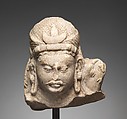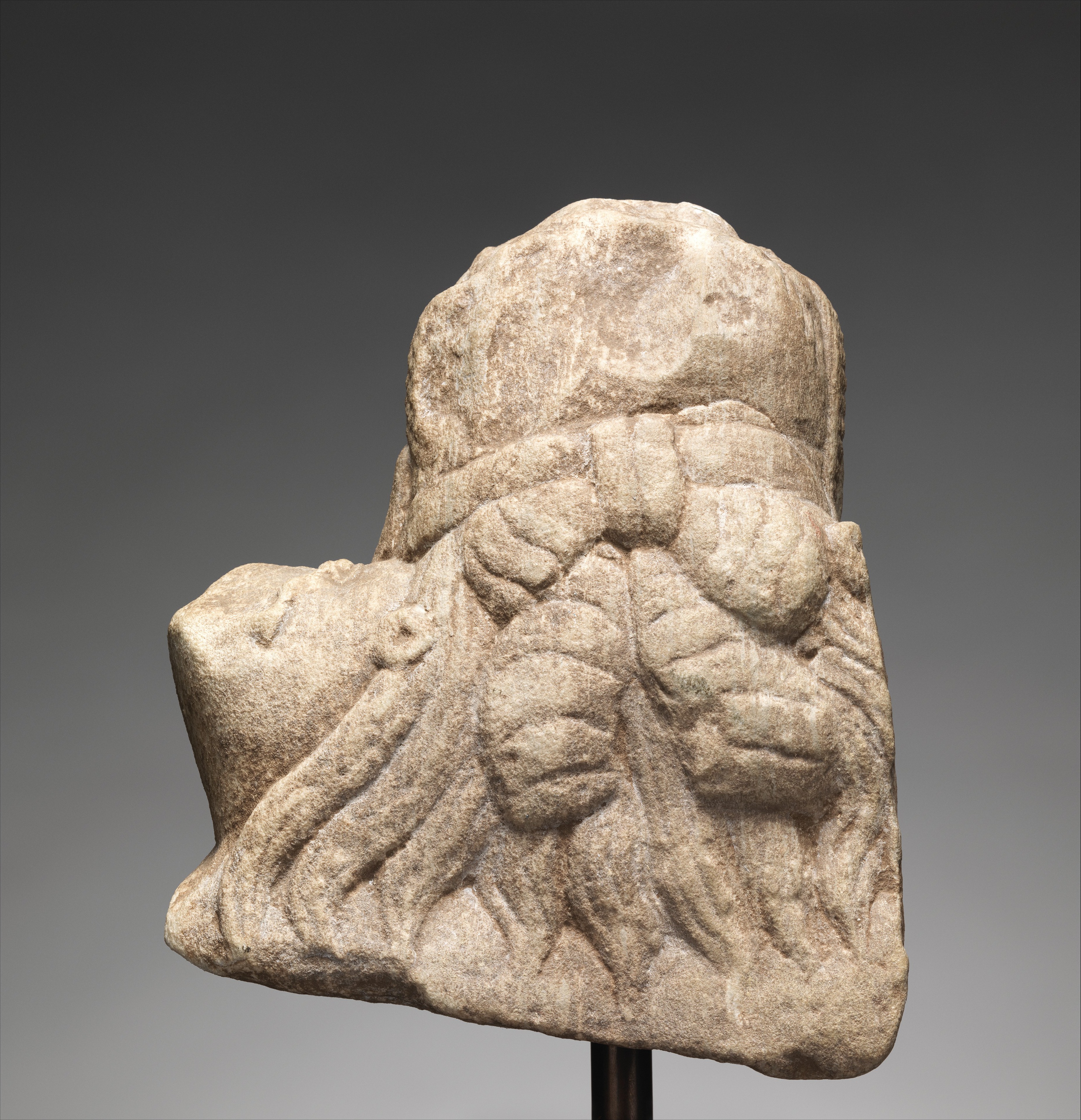Head of Vaitunkta Vishnu
Northern Pakistan (Brahmanical post-Gupta)
Not on view
Head of Vaitunkta Vishnu, seemingly dates later, but in reality may be close in date to the Head of Shiva. It is arguably one of the earliest renderings of a new Vishnu iconographic type, the three-headed Vaikuntha Vishnu in which the anthropomorphic Vishnu has the faces of the boar (Varaha) and lion (Narasimha) manifestations (avatars) emanating left and right. Here the boar is intact, the lion largely missing, but both emerge from the shoulders, not from the side of Vishnu’s head as seen in later Kashmir’s classic versions. This feature, seen also in the earliest dated version of this subject known—a late 5th century bronze from northern Pakistan—and a 6th century version now in the Museum of Indian Art, Berlin, points to our stone version dating from this first known phase of the iconographic-type’s appearance. A second feature allows us to post-date the work to a specific historic event, the Sasanian invasion of northern Pakistan in the early 7th century. The legacy of this contact is witnessed in the crown worn by Vishnu. No longer is it the Gupta-type, with a tripartite crown often with lion and pearls décor, but rather a mesh-patterned crown with diadem and ribbons as seen in crowned Sasanian ruler portraits, combined with a distinctive crest inherited from Gandharan art. Yet, a comparison of the physiognomy and others features of the Vishnu face—the moustache, presence of identical ear-clips—all point to these works being broadly contemporary.
Due to rights restrictions, this image cannot be enlarged, viewed at full screen, or downloaded.
This artwork is meant to be viewed from right to left. Scroll left to view more.





